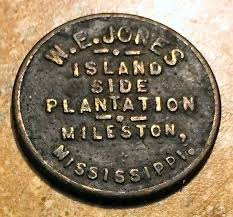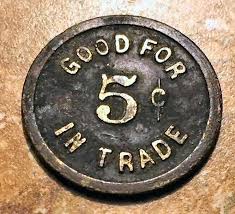Mileston, Mississippi: Legacies of Land Reform and Black Empowerment
- Sipp Talk

- Sep 7, 2020
- 4 min read
Updated: Jan 19, 2021
Mississippi is often touted as one of the most fertile stretches of land in the world, and no section of the state holds to that idea like the Mississippi Delta. Home of ‘King Cotton” and the legacy of Mississippi’s past, the poorest county in Mississippi, Holmes County is also home to a community built from the ground up by the farmers that were once forced to sharecrop the very land that their ancestors were enslaved upon.
Did you know Mileston, Mississippi is known for building one of the most successful community based farming communes in America and were able to help spur the Civil Rights Movement during Freedom Summer?

In 1940 the United States purchased over 10,000 acres of land from the W.E. Jones estate in Holmes County through the Resettlement Administration, a subsidiary of the Farm Security Administration and U.S. Department of Agriculture.
This land became the unincorporated community of Mileston just a few miles outside of the nearby town of Tchula, Mississippi. Mileston was one of over 100 reclaimed farming communities in the U.S. as a part of the New Deal which sought to spur economic growth through land redistribution.
As one of only 13 completely Black settlements, Mileston’s unique history of sharecropping frames it as a window into the potential of what land reform could mean for future generations of Mississippians.
"Originally meant as a means to eradicate poverty..."
Originally meant as a means to eradicate poverty, Mileston was complete with 70 individual farming plots for single families ranging in acreage from 40-100 acres per plot, each with its own house, barn, well, smokehouse, chicken coops, and other animals as well.
Initially, the families would rent the land and make payments to the government, but as the ghosts of the former sharecropper system haunted local residents they were eventually sold the land for around $5,000 per plot. The community also had an accredited high school, cotton-gin, general store, post office, blacksmith shop, and much more.
With the 36 family co-op serving and the center for the community, residents were able to access the local clinic that was spearheaded by the Mileston Medical Association which was lead by Nurse Earless Hope who taught residents about nutrition, planning, and childbirth through help from local midwives. Nurse Hope even was able to offer home and office visits, general medications, and frequent check-ups to residents for an annual fee of $15.00 per family.
Mileston was a thriving testament to the power of community organization. This rural community gives light to the question of Reconstruction and even illuminates the inquiry of what forms reparations could take for descendants of the formerly enslaved.
Initial efforts in Mileston directly redistributed wealth built on the backs of Black laborers and the enslaved and gave that wealth and agency to their descendants.
Out of the 100 families originally inhabiting Mileston 83 were former sharecroppers who were able to help build Mileston into a prosperous community that eventually sowed the seeds of change by serving as the catalyst of Civil Rights activists such as Robert Clark, the first Black man elected to the Mississippi legislature post Reconstruction. Mileston also spurred discourse among the newly empowered community that had been disenfranchised since Emancipation due to active voter suppression through both de facto and de jure means.
The sense of emboldened and brazen activism found in Mileston would help to ignite events such as the 1963 voter registration drive in Holmes county which resulted in arrests of some local farmers such as Hartman Turnbow, who was the first Black man to register to vote in Holmes county acting as a predecessor for Freedom Summer the following year.
Sadly, Mileston, like many Black communities, is facing a crisis because it is now overlooked and underserved by local authorities. In 1946 the U.S. government stopped directly funding Mileston’s co-op farming and pulled out all resources related to land redistribution.
To help revitalize this bastion of Black determination locals opened a farmer’s market in 2002 that operates as a mass community garden where youths in high school can earn wages of up to $700 per month for assisting in the planting and harvesting of locally sourced organic produce. Vendors come to buy the produce that the youth have to offer which helps to keep residents well fed and eating healthy as well.
The program was started by the West Holmes Community Development Organization which seeks to help eradicate food insecurity and poverty within the local community. Companies such as Sysco Foods and Walmart have been known to be customers and even local W.I.C. benefit recipients have the ability to exchange vouchers for fresh, organic produce.
Mileston’s story is telling of Mississippi’s history and how the land can tie us down, or uplift us. By creating equitable, sustainable communities, residents of Mileston have left a legacy of perseverance, determination, and communal economics that embodies a secret that Black Mississippians know all too well; land is power, land is freedom.






Comments